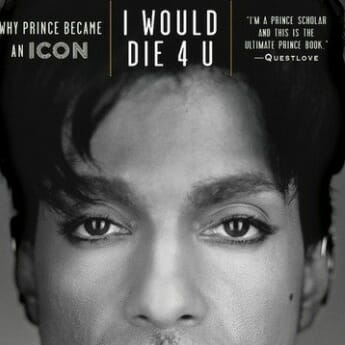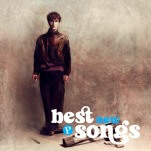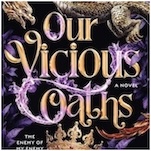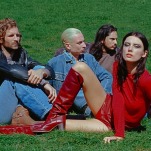I Would Die 4 U: Why Prince Became An Icon by Toure
U Don’t Have 2 Be Cruel 2 Rule His World

Can any book really do justice to the musician Prince? It’s doubtful. But an increasing number of authors have been giving it a try in recent years. At least three books about Prince came out in 2011, another in 2012, and 2013 brings I Would Die 4 U, an attempt by the music journalist Toure to explain what made Prince an icon.
Toure wrote frequently for Rolling Stone (also for the New York Times, Village Voice and other publications) in the ‘90s, often penning profile pieces where he got to play poker with the rapper Jay-Z or hole up with another rapper, 50 Cent, and his bodyguards. The writer created a memorable piece on Prince for Icon, describing a visit to the purple majesty’s mansion, where the two men played basketball together. (See Toure’s compilation, Never Drank The Kool-Aid.)
I Would Die 4 U—named after a compact, explosive little tune from Purple Rain— clocks in at an easy 150 pages, split into three sections. The first focuses on Prince’s childhood and family relationships and the way these affected his work ethic and his subsequent interactions with people. The second section examines sex in Prince’s life and music. The final explores the connections between Prince and God.
Toure sources from interviews—some new, many from other books about Prince or articles written about him in the ‘80s—and from musical experts. He relies most on the Roots’ drummer Questlove, a well-known Prince fan (the Roots recently served as the house band for a Prince tribute concert at Carnegie Hall).
The book goes in for macro-sized arguments, devoting a lot of attention to the demographic shifts Toure believes explain why Prince hit it so big. Prince, immensely talented, happened to arrive at the right place and the right time.
Toure sets the stage for this argument with an anecdote from early in the musician’s career, when the Rolling Stones invited Prince to open for them in L.A. As Prince’s longtime bandmate Matt Fink tells it, “‘A hardcore hippie crowd, they took one look at Prince and went what the heck is this. . . I’d say out of the first sixty rows of people, 80 percent of them were flipping the bird. And then they’re throwing whatever they could get their hands on.’”
(Prince tells it better—“‘I’m sure wearing underwear and a trench coat didn’t help matters but if you throw trash at anybody, it’s because you weren’t trained right at home.’”)
So if Prince had showed up earlier, Toure thinks “maybe he would’ve gotten that same cold response from other audiences.” But Prince arrived at the start of the ‘80s, allowing him to play into, feed off, embody, and most importantly, assuage, the fears and worries of Generation X (and piss off a few hippies at the same time).
For Toure, Gen X fears included: Anxiety stemming from widespread divorce among parents. The “specter of AIDS.” The “potential nuclear apocalypse of the long Cold War.” And “a nation of declining wages and shrinking job possibilities, where people worked harder for less money.” The author engages in some analysis of Prince’s lyrics, but Toure doesn’t try to deliver a book about how Prince put together albums or coaxed different sounds out of his synthesizers.
The initial section of I Would Die for U covers the classic artist-origin story, where troubled beginnings lead a boy or girl to channel energy into art as a means of escape. Prince had a strange family situation, marred by divorce and absent parents. In a 1981 interview, he said that he “ran away from home” and “changed address in Minneapolis thirty-two times.”
These troubles led him to become wildly driven, mistrustful of others, a great artist … but a forceful, unpredictable band leader and a hard man to love or work for. The musician Eric Leeds, who played horns for Prince, notes that when it comes to interactions with other people, “Prince is obsessed with always controlling the relationship entirely. . . Life to him is a movie in which a he’s the director, the producer, the screenwriter, the casting director, and he’s the star.”
His control extended to even the small details … like which clothes his musicians could wear when they left their hotel rooms on tour. Gayle Chapman, who played keyboards in an early iteration of Prince’s band, described the dress code: “If you walk out of your hotel room you were supposed to be in your rock-and-roll garb. Spandex. Naked. Hair. . . just to get razor blades at the hotel shop.”
The second section of the book will grab those who browse store shelves. Prince brought explicit sex to pop music in a way that no one else had (his songs make Marvin Gaye’s album Let’s Get It On feel like notes from a high school health class). Toure delves into sex in the ‘80s and reports on Prince’s own sex life. According to the author, “Someone who was intimate with him [Prince] and knows others who were, too, says Prince was not doing exactly as much screwing as he’d have you believe.”
-

-

-

-

-

-

-

-

-

-

-

-

-

-

-

-

-

-

-

-

-

-

-

-

-

-

-

-

-

-

-

-

-

-

-

-

-

-

-

-








































